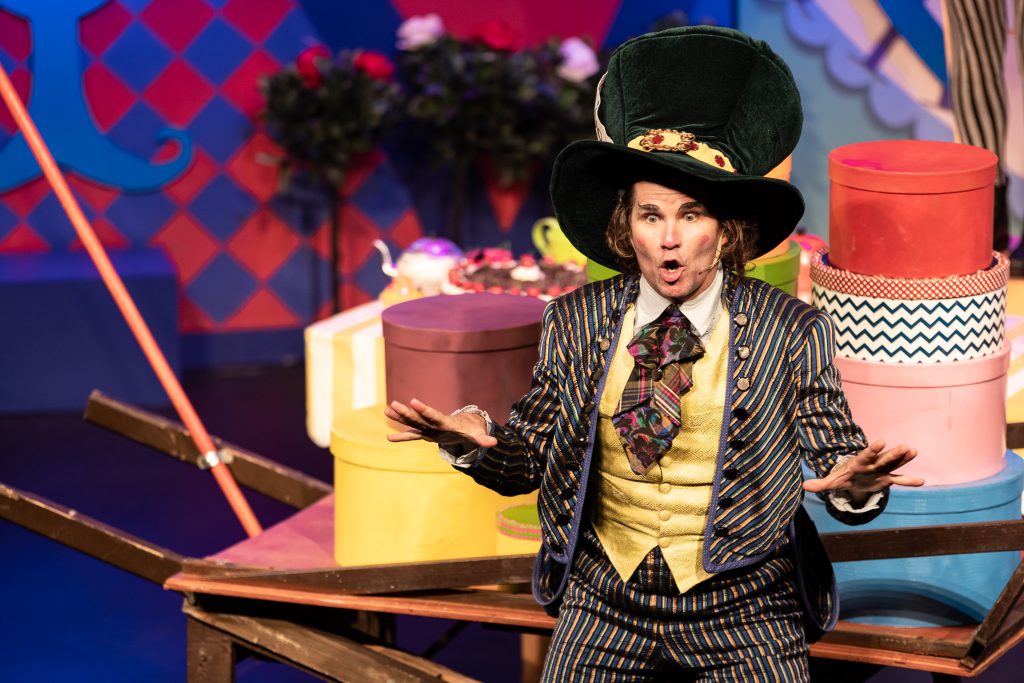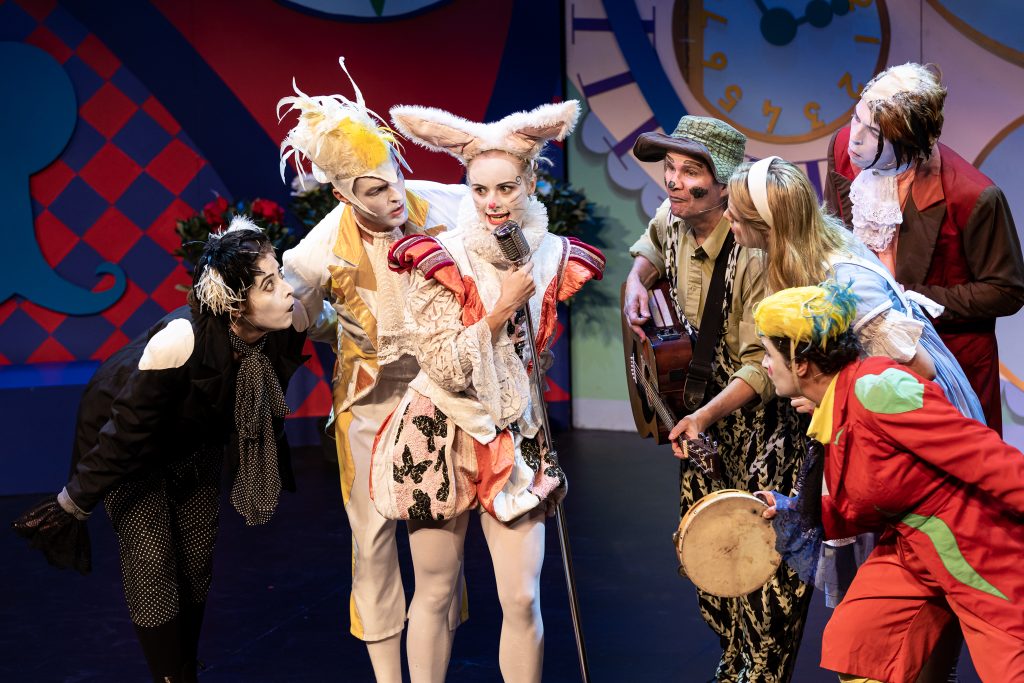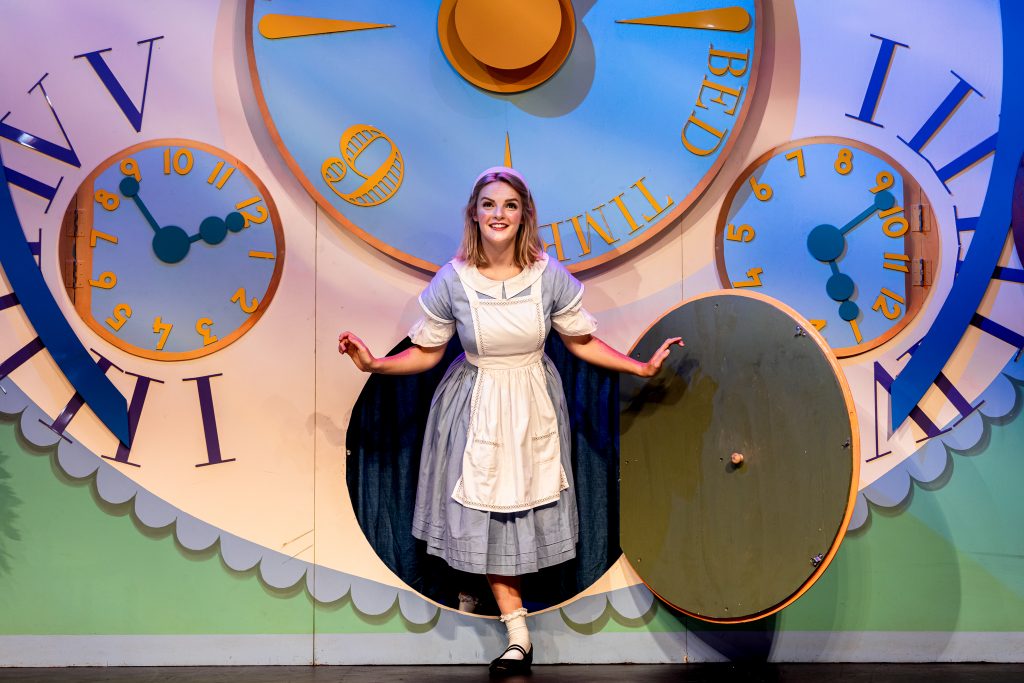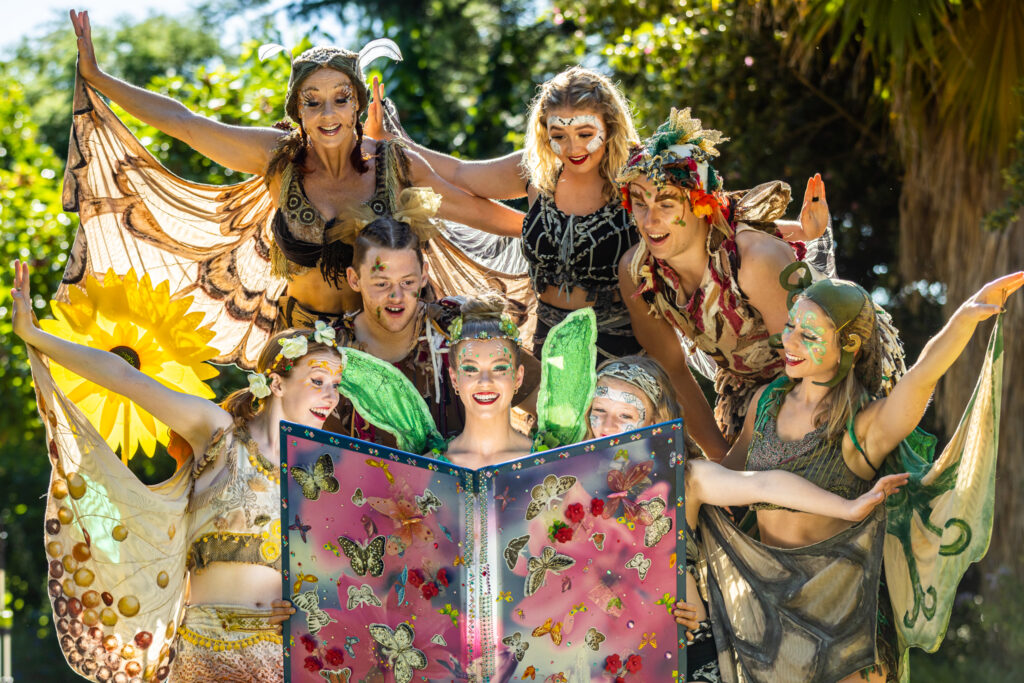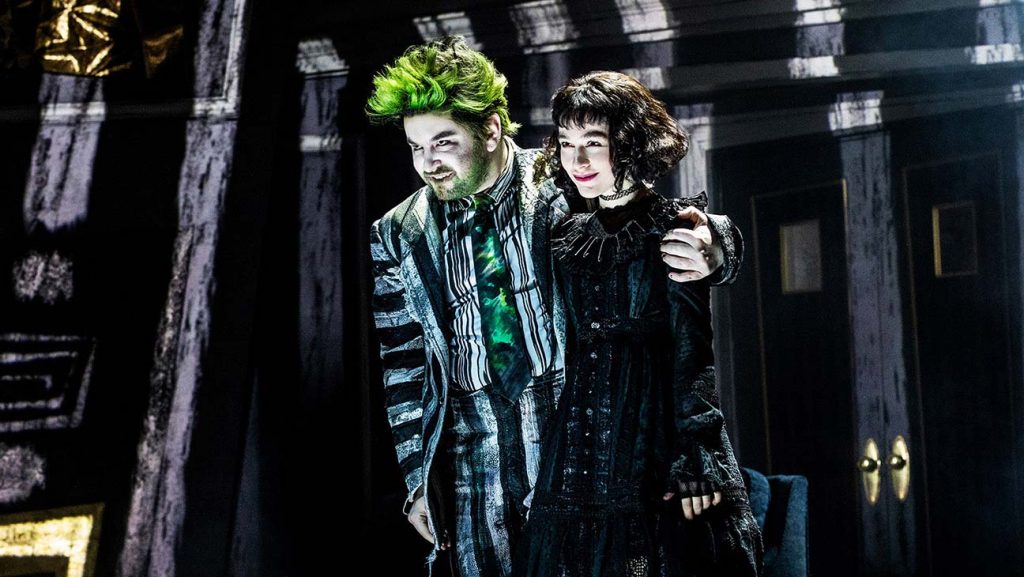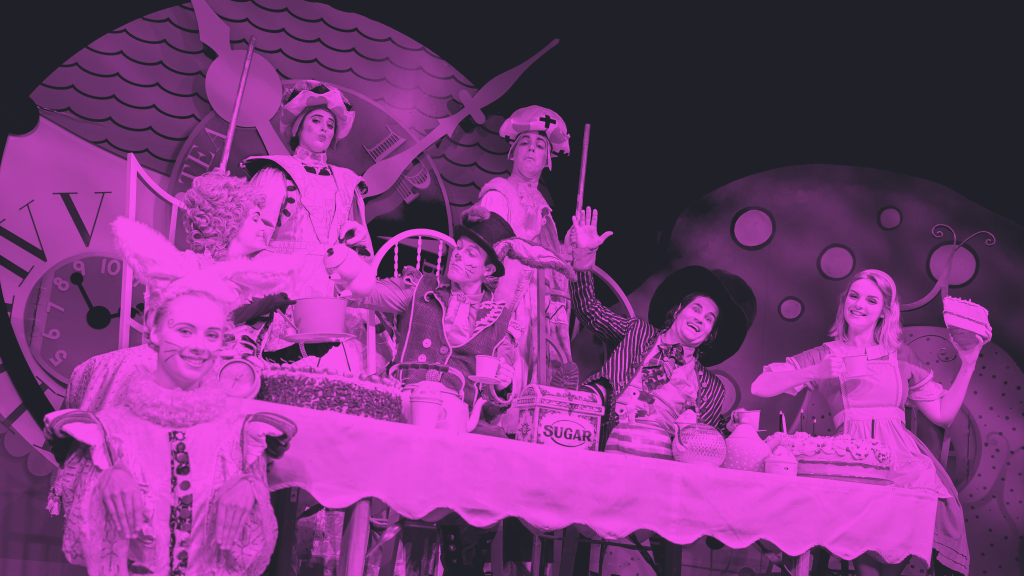
‘Alice in Wonderland’ // Australian Shakespeare Company
‘Alice in Wonderland’ was mad.
The school holidays are always a perfect time to introduce children to the delightful world of theatre. With such a variety of kinds, it can be overwhelming to choose where to start. Thankfully, the Australian Shakespeare Company (ASC) has established itself as master of children’s theatre and is a great place to escape into the art of imagination. ASC knows just where to transport Melbourne audience’s this summer season too – down a rabbit hole and into the wondrously wacky Wonderland.
Nestled within Melbourne’s East End Theatre District, upon the famed Collins Street, stands the historic Athenaeum Theatre. Parents and children alike are greeted to a sense of grandeur and excitement as they climb the red-carpeted staircase to the theatre hall. The walls are adorned with words and handprints attributed to some of Australia’s greatest wordsmiths, including David Malouf and Paul Jennings. Upon entry, you are given the sense of pride that the theatre bestows upon literature and its writers – making it an ideal location to house this production of ‘Alice in Wonderland’.
First penned in 1865 by the acclaimed children’s author Lewis Carroll, ‘Alice’s Adventures in Wonderland’ (more commonly referred to as ‘Alice in Wonderland’) tells the story of a young girl who finds herself transported to a mysterious world where nothing is quite as it seems. The story has amassed fans of all ages throughout its 157 years. With countless recognisable characters, like the Cheshire Cat, ‘Alice in Wonderland’ remains a landmark of English literature that still brings joy to its readers to this day.
Numerous iterations of Carroll’s source material have been made, most notably by Walt Disney Studios, with a 1951 animated film and 2010 live action ‘remake’ by Tim Burton. The story has also been transferred to the stage on several occasions. A musical adaptation premiered on London’s West End in 1886. Its success resulted in festive seasonal productions for over 40-years. Composer Joseph Horovitz was called upon by the London Festival Ballet in 1953 to write music for their production of ‘Alice in Wonderland’. Similarly, a reinvented ballet, performed by The Royal Ballet, premiered in February 2011 at London’s Royal Opera House. Its most recent incarnation is in the form of a one-act opera by Gerald Barry titled ‘Alice’s Adventures Under Ground’, which again premiered at the Royal Opera House in London in February 2020.
While ‘Alice in Wonderland’ has been adapted time and time again for the stage, it remains a favourite production among the pantomime community. Carroll’s story offers a perfect basis for a colourfully eclectic theatrical interpretation – something for which the ASC revels in. The stage of the Athenaeum Theatre offers a great blank canvas for the ASC to create Wonderland and is draped in fairy lights that create a cool and welcoming violet glow. A single set piece encompassing a toadstool house, giant clock, and bespoke chess board stretches across the stage, promoting the illusion of a grand land within a compact space. Contrasts of set pinks and red hues with the low purple lighting, lull the audience softly into the juxtaposing nature of ‘Wonderland’ before the show commences.
As is commonplace with children’s pantomime theatre, music and sound are integral components in the storytelling’. The production’s soundtrack encompasses a multitude of melodic earworms, which are created deliberately to get children to sing along. The orchestration of this works very well as children and parents alike are encouraged to participate in the musical fun by stamping their feet and singing choruses (for which they are most willing). Each character is given a song throughout the production reflecting their personality, though the highlight would have to be the Twiddles’ catchy number which is sure to be stuck in your head for hours afterward. Although the music was at times too loud to fully appreciate what was being sung on stage, the atmosphere it induces is nothing short of joyous.
Each character is brought to life effectively by not only their performers, but their costuming. As is standard of pantomime, costuming is exaggerated through bold, bright colours that brilliantly convey each character’s personality. With every member of the cast (bar Cassidy Dunn’s Alice) assuming numerous roles, the need for easy costume changes is paramount. Every costume perfectly accentuates the traits denotable to their respective characters. Perhaps the most successful are those of the White Rabbit and the King and Queen of Hearts. The White Rabbit’s regal pantaloon ensemble, while befitting of the character, feels like a clever homage to the playwright namesake of the production company. Similarly, in having the King and Queen stand upon stilts, the ASC promotes a sense of splendour and awe amongst the audience.
Creative Director of the ASC, Glenn Elston, imbues ‘Alice in Wonderland’ with wit and fervour. Audiences are treated to a production that has been created with a large amount and passion for the source material, however it is also not afraid to be silly and poke fun at itself. In using the many “trap doors” that aligned the set, the cast of ‘Alice in Wonderland’ successfully drew audiences to believe the stage is larger than it actually is. One notable example is an early scene when a curious Alice drinks a bottle she probably shouldn’t, growing into a giant with arms coming out of the windows. The production makes clever, economical use of the space given – a great feat to create Wonderland from a small area.
As mentioned above, the passion ASC feels for ‘Alice in Wonderland’ is clear. The same can be said of the cast’s passion for entertaining children through live theatre. Each member of the seven-piece cast brings something special to the table and enjoys engaging their small audience members through song and laughs. Cassidy Dunn as the inquisitive Alice is charming, managing to jump from joyous curiosity and sharp defiance effortlessly. Madeleine Mason’s Queen of Hearts is equally domineering and humorous. Mason’s comedic interplay with Patrick Schnur’s King of Hearts is one of the highlights of the show’s climax. Ross Daniels and Claire Nichols offer great expansions to the characters of the Caterpillar and Duchess, each establishing a talent for voices which is sure to get children giggling.
Olivia McLeod and Dennis Manahan are standouts, however. McLeod effortlessly changes between the White Rabbit and Dormouse throughout. Her friendly, resolute demeanour brings a new layer to the time-challenged, and sleep-deprived, rodents. Manahan brings fan favourite The Mad Hatter to life with witty zest. Manahan’s knack for improvisation is a real highlight of the production, particularly when it is self-referential (a delight for the adults of the audience as well as the kids).
ASC’s ‘Alice in Wonderland’ is an excellent production to introduce children to live theatre. Boasting a creative cast, colourful sets, and catchy tunes, spending a morning in Wonderland (with Alice) is a treat for everyone – young, old, and mad (as a hatter)!
‘Alice in Wonderland’ performed until Saturday, 22 January 2022 at Melbourne’s Athenaeum Theatre. For more information, visit the Australian Shakespeare Company’s website.
Photos provided by Australian Shakespeare Company.




